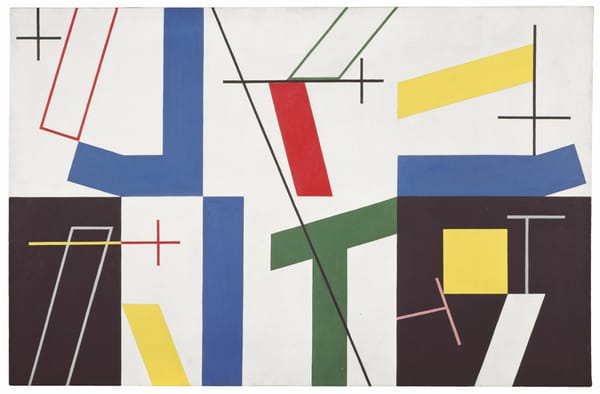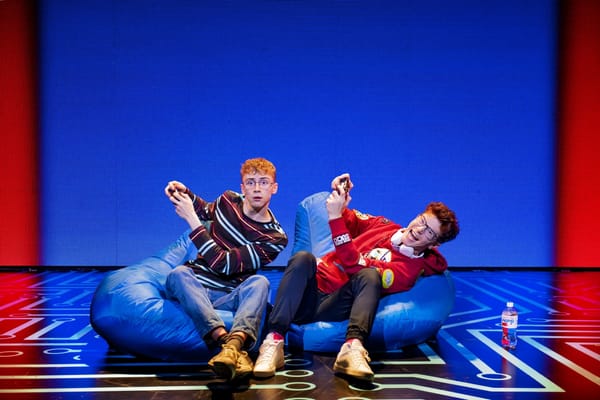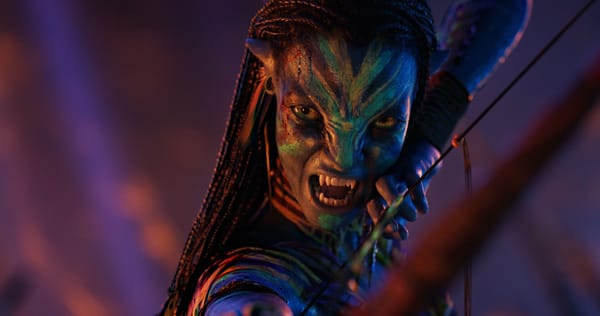Write us a new play, Hal!
Running for just three nights at the Young Vic, this innovative performance workshop attempts to develop a play using machine and human intelligence.

AI
★★★★
- What: Theatre
- Where: Young Vic
- When: 23rd–25th August
- Cost: £10-20
What is a play? Is it a tragedy or a comedy; a mere three-act narrative; or something more immersive and reflective? This is one of the fundamental questions pondered by the human company and, perhaps, the synthetic mind that featured in this live performance workshop. The stated goal of the production was to, over the course of the three nights that the show ran, develop a play written primarily by an artificially intelligent system — the eponymous AI. To this end, a company of self-dubbed writer, performer, and director-engineers take to the stage, armed with laptops and a Google doc, to interface with OpenAI’s GPT-3. Together they act out, discuss, and shape the machine-generated text into something worth watching.
The result is a foretelling experience of how invaluable human frailty and imagination is to a narrative experience. The AI system is, to its credit, articulate, lewd, and–not out of place in the London theatre scene–appears to have an uncanny penchant for writing about rape, destruction, and death. It is also, if we want to be blunt about it, pretty dumb. For all GPT-3’s ability to construct flowing and, at times, profound text; there is a subtle but unmistakable lack of contextual awareness that gives its responses a surreal and inhuman feel. “Give us a real limerick!” shouts a frustrated audience member. When a poet breaks the rules, it’s meaningful; when a machine does it, it’s wrong? With this in mind, it was the two writer-engineers, Chinonyerem Odimba (Chino) and Nina Segal, that captured my attention in a new way. Aside from the art of designing prompts in itself, Chino and Nina seemed to have a firm grasp and a hot take on how to make the most of this strange new tool through composition and curation.
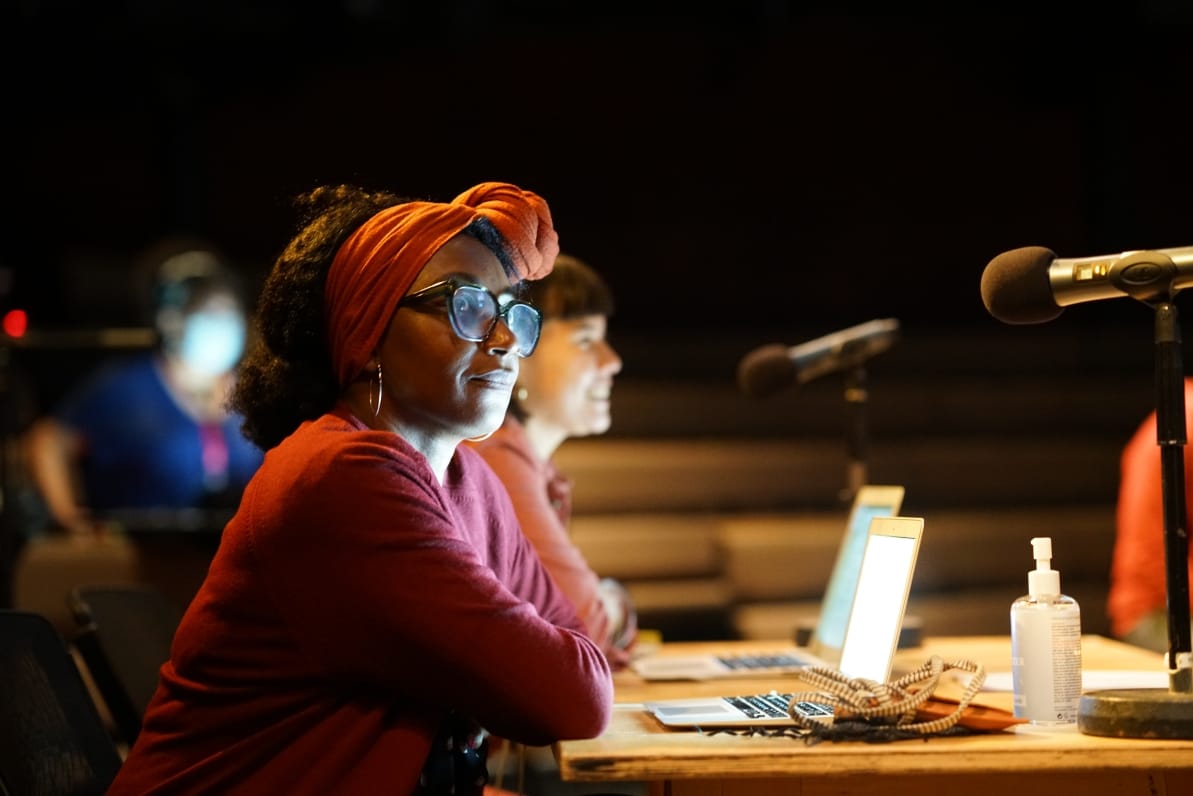
As an AI researcher, I, like most in my field, am acutely familiar with the repetitive, engrossing, and fiddly process of interacting with “intelligent” systems. It is for this reason that it was fascinating to see both the writers engage with that same process but from an artistic and creative perspective; and with the far more informal, complex, and nuanced natural language — English. Centre stage, they both had the air of an early Victor Frankenstein, building a creation from their newfound insight into this new form of… life? Technically, GPT-3 is a machine that makes predictions; more specifically, predictions about what the next letter, word, or phrase in some text might be. Accordingly, there is a fine art to crafting useful prompts for GPT-3 to autocomplete, and a requirement for some creative consolidation of its output. And herein lies the true value of this production: the interactive and collaborative nature of the company on stage: machines and humans included. Tyrone Huggins, a performer-engineer, delivers an impassioned monologue from GPT-3 on free will; Simone Saunders finds a very raw and believable character in an apocalyptic tale; and all three, including the final 'performer-engineer' Waleed Akhtar, find something surreal and piquant as “The Beastmen”.
When a poet breaks the rules, it’s meaningful; when a machine does it, it’s wrong?
A common theme in both this performance and contemporary AI research is the automated and, perhaps, undesirable learning of biases prevalent in input datasets. GPT-3 is based on the structure and content of a corpus of English text, what it spits out is invented, sure, but it is also fundamentally a snapshot of a reflection on our society. This phenomenon was most evident in the monologues generated by the system, and obvious biases in dialogical casting. Waleed as a terrorist, groundbreaking(!). I’m not convinced this company explored the issue in the best way; if the key is indeed to be found in the interaction between metal and mind then perhaps there is more to be explored in how we, now, can subvert, reinvent, and reclaim these stories. But it was amusing nonetheless that, amongst discussions of free will and determinism, and how GPT-3 is just a mirror of society, that the audience satisfies almost all expectations and requests a sexual limerick from the off.
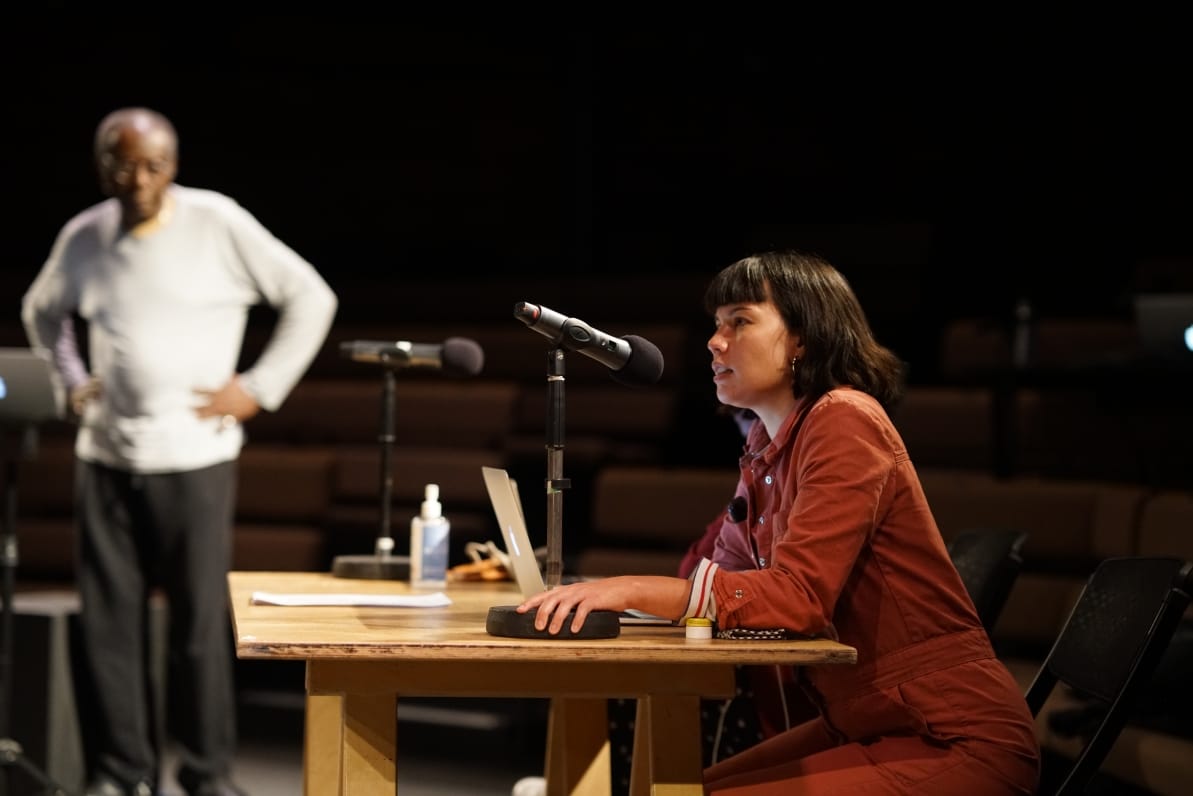
Like any matter worth discussing, there are prescient philosophical issues that rise straight to the surface in the wake of this new play. Could something written by a machine be art? Are the machinations of silicon and metal really so different to their organic counterparts? Can one be an artist without a subjective experience of one’s own? There are no answers here, but it certainly feels as though it is the start of a long journey into a new type of theatre. I can’t help but feel that the real artistic magic in this production was in the composition; the piecing together of fragments generated by a monkey and a typewriter. For this, it is the generality, breadth, and sheer randomness that seems to be both required and only present in humans, at least for now. Magic has an awful habit of looking like science when we know how it works, I hope we can retain some of the trepidation and potentiality that filled the Young Vic this week as we see more technological changes in the whole theatre creation process.



